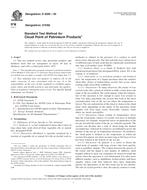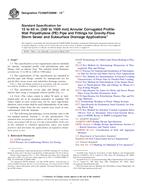1.1 This guide covers the contents required for a complete report of a geostatistical site investigation. A complete report is understood here to be one that contains all the information necessary to the understanding and evaluation of the geostatistical site investigation by other geostatisticians.
1.2 This guide does not discuss the reporting of supplementary information that may assist evaluation of the report.
1.3 While geostatistical methods are used in many fields, this guide is primarily intended for the reporting of environmental and geotechnical applications. Environmental applications of geostatistics are discussed in United States Environmental Protection Agency (EPA) documents (1, 2, 3, 4, 5, 6, 7).
1.4 The basic geostatistical methods referred to in this guide are fully described in texts by David (8), Journel and Huijbregts (9), Clark (10), and Isaaks and Srivastava (11). Olea (12) gives a thorough compilation of geostatistical terminology.
1.5 This guide does not discuss the reporting of multivariate, space-time, and other less-frequently used geostatistical methods; however this is not intended to reflect any judgment as to the validity of these methods.
1.6 Geostatistics is but one approach that can be used to understand and describe site conditions. Investigations should incorporate whatever supplementary knowledge of the site that may be available from other sources. As with classical statistical approaches, geostatistics is not intended to establish cause-and-effect relationships.
Product Details
- Published:
- 05/01/1994
- Number of Pages:
- 5
- File Size:
- 1 file , 46 KB


